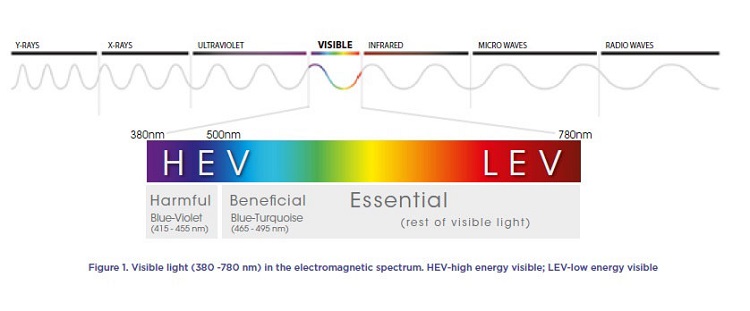The electromagnetic spectrum covers a continuum of electromagnetic waves from radio waves, microwaves, infrared, visible and ultraviolet (UV) radiations, through to X-rays and gamma-rays, the photon energy increasing with decreasing wavelength [figure 1]. Sunlight comprises 5-10% UV (100-380nm), ~40% visible radiation (380-780nm), and 50-55% infrared radiation. These are either absorbed or transmitted by the successive layers of the eye, modulating the light reaching the retina.1

Figure 1: Visible light (380-780nm) in the electromagnetic specturm. HEV – high energy visible; LEV – low energy visible
UV waves are harmful to the anterior part of the human eye. In a healthy adult’s eye no UV radiation actually reaches the retina. UVC (100-280nm) from sunlight are filtered by the atmosphere, while most UVB (280-315nm) are absorbed by the cornea. Residual UVB and most UVA (315-380nm) are then absorbed by the crystalline lens. In contrast, visible light reaches the retina in high proportions.2
Register now to continue reading
Thank you for visiting Optician Online. Register now to access up to 10 news and opinion articles a month.
Register
Already have an account? Sign in here


